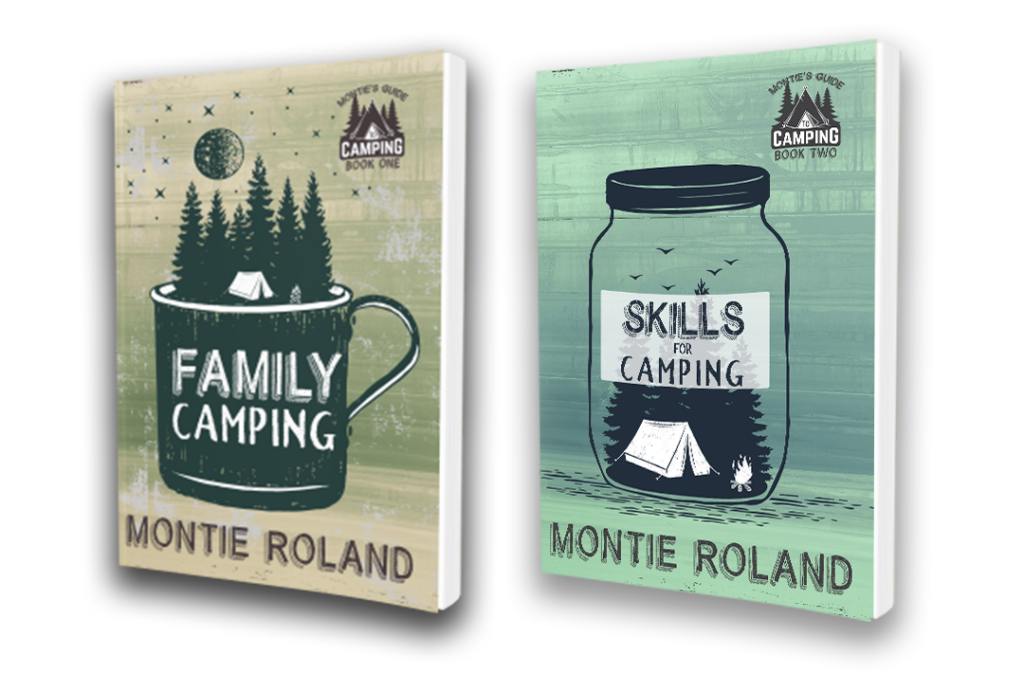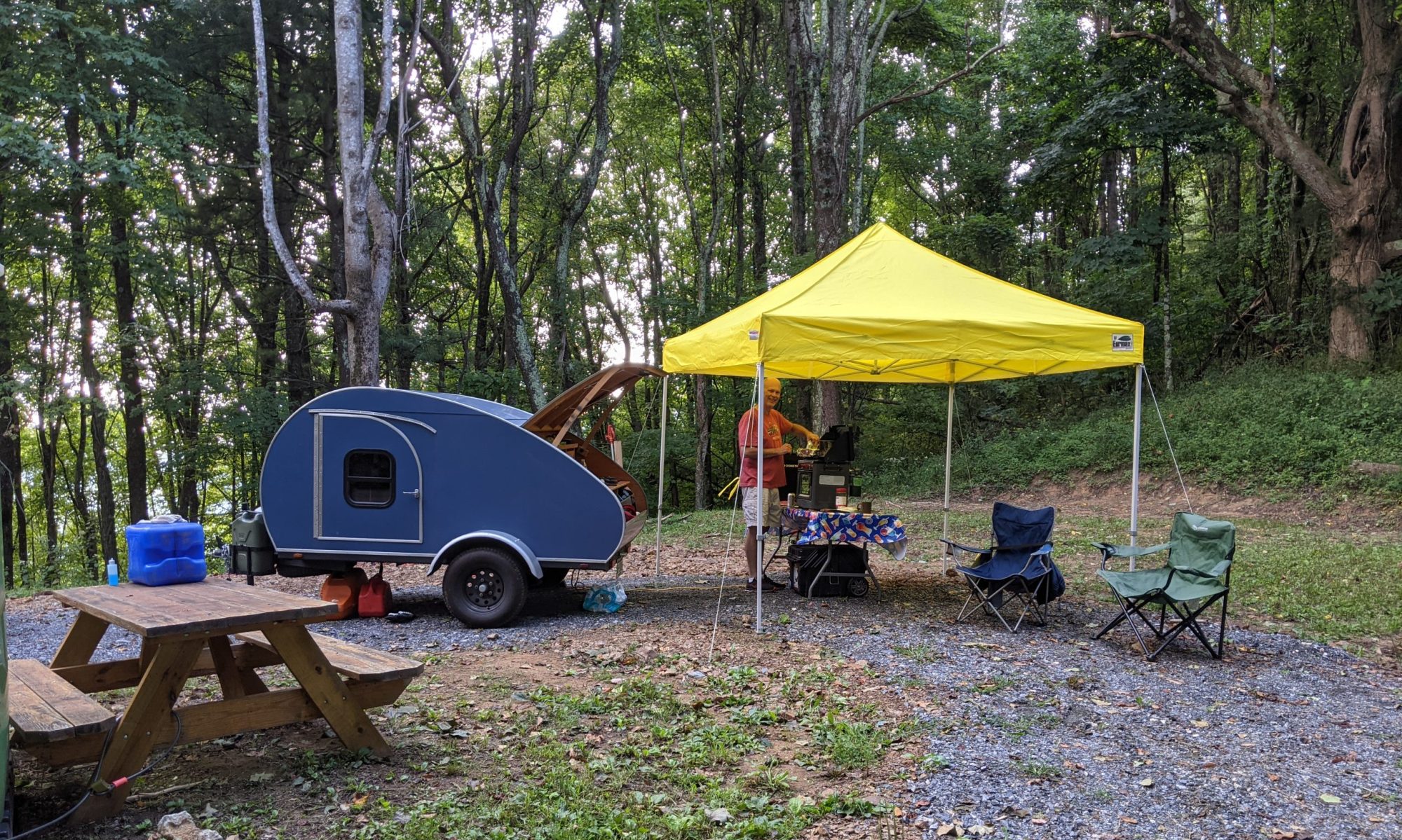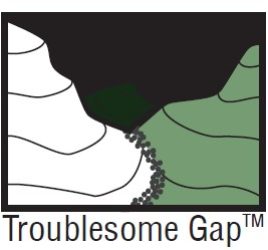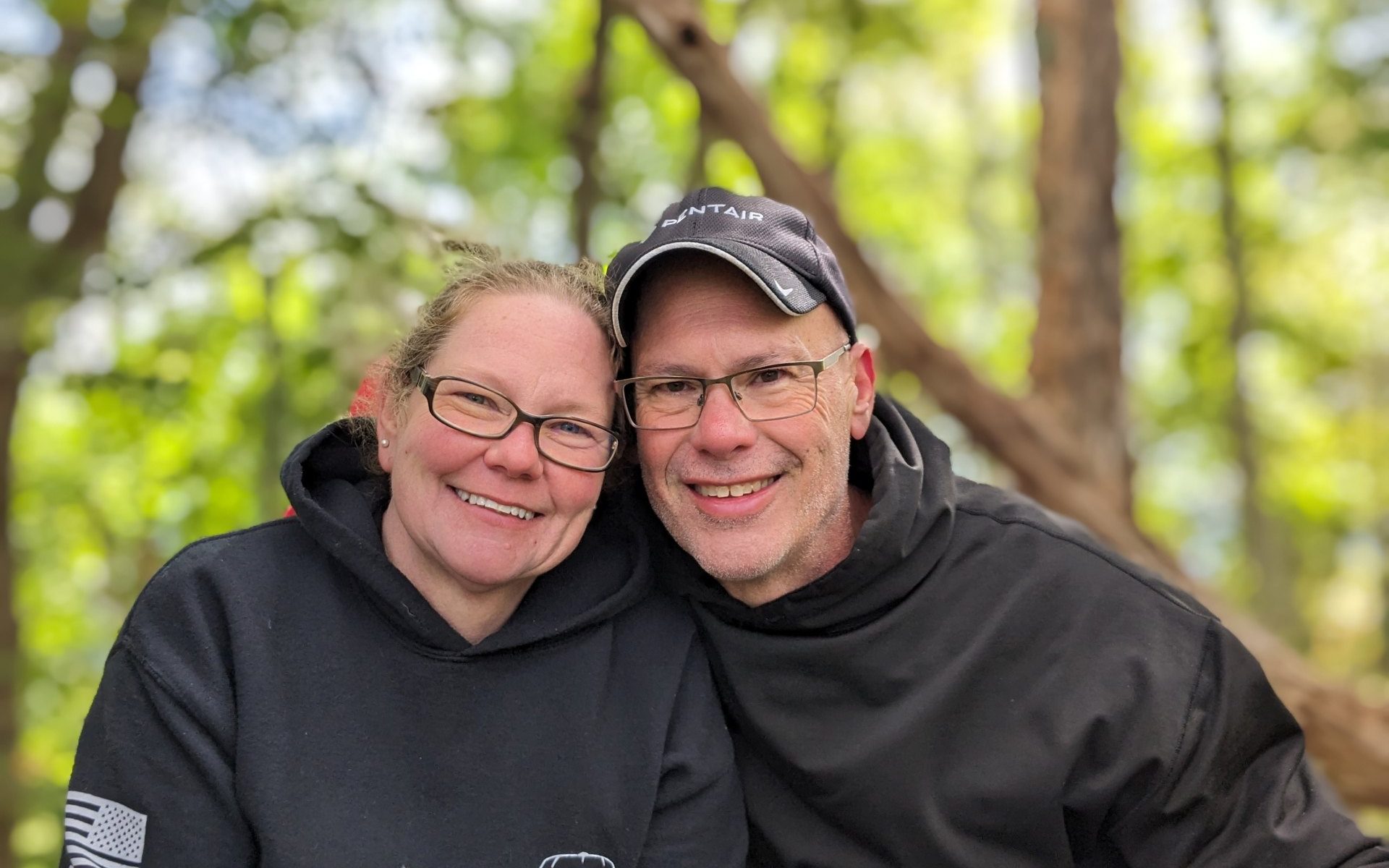When you’re active, your level of physical activity determines how much heat your body generates.
At the same time, the weather can change quickly, so the amount of clothing you may need to keep you warm varies over the course of the day, and over the course of your activity.
If you’re really active, let’s say you are on a long hike, then your exertion is creating a lot of body heat. You want to reduce the amount of heat you’re maintaining in your body so you stay at a comfortable temperature. Getting sweaty means you have wet clothes, which don’t keep you warm later. Staying comfortable, no matter what the weather, is critical to enjoying the trip. The clothes you wear are a huge part of your comfort.
Year round you need to be concerned with staying dry, in colder weather, you need to make sure you stay warm.
Regulate your body temperature with layers.
When you become warm, you can take off a layer. When it gets cold outside, you can add a layer. A lot of times people don’t realize how easy regulating your body temperature is and how much it contributes to your comfort outdoors.
For example if you go from a seventy degree house in the middle of winter to a twenty degree car, you’ll have on a thick coat to stay warm. Once the car warms up, you take off the coat. The coat kept you warm until the car heated up, and then you shed the outer layer. On the flip side, if you’re outdoors and you have the same thick coat on in a chilly climate, and let’s add that you’re moderately active—you may need half of the insulative value your coat can provide. With common sense, you’d unzip it which means your arms and back would stay warm and your chest cold. The best way to regulate your body temperature outdoor is to dress in layers.
In the above example where it is cold out and you are exerting energy, you might want to dress in multiple layers, so you take layers off and on during the day as you exert energy and feel warm, or as you move into shady areas or stop for a break and feel cooler.
You also need to be concerned with moisture; in this case rain or snow. A common approach is to have a water-proof or water-resistant outer layer.
Base layer.
The base layer is usually a wicking or poly fabric. This is the layer that touches your skin. Silk is the best fabric because it pulls moisture away from your body. When moisture touches the skin, you’re not as warm and you get cold. Those materials pull dampness away so it doesn’t wick the heat directly away from your body. There are two parts to the base layer, the shorts (or long johns if it is cold) and the top.
You’ll notice I threw out the names of different fabrics you’ll see in these situations. One of the materials I didn’t mention was cotton. The problem is when cotton gets wet; it’s going to be cold. Wool has a certain amount of natural warmth even when it’s cold, and so even a wool shirt that is wet or moist, provides some percentage of warmth without being totally dry. The point is cotton, once wet, won’t keep you warm.
Weights of base layers.
They can be light, medium, and heavy weight. What you wear depends on the weather you’re in. Most of the time, you’ll end up with medium weight. Base layers are often long sleeve, pullover—so think long underwear. The bottoms are the same. Your base layer, top and bottom, both wick moisture away.
The next layer.
The next layer may be a sweater or wool shirt. You may choose to have a thicker layer on top of that; and on top of that, you might have your jacket (often water resistant).
Consider your camping experience and how close you are to town.
Let’s say you are camping close to stores or in a campsite with hundreds of people, and the weather’s not extreme, perhaps in the fifties and sixties and seventies, then don’t feel like you need to go to REI and buy a bunch of high-performance clothing that’s expensive.
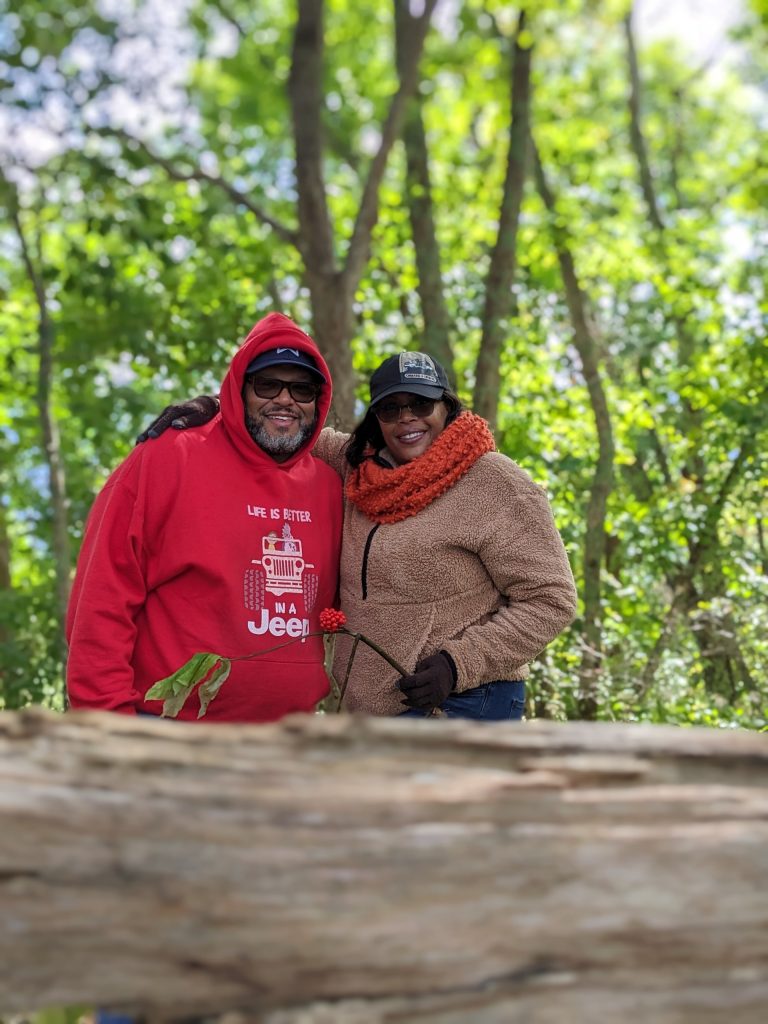
When the quality of layers matters.
As your level of adventure and length of camping trips increase, or you camp during cooler weather, the more you need to think about the quality of your clothing. The outer layer, a waterproof jacket, is critical because keeping water away from your body is the number one thing in staying warm and comfortable. Like I said in an earlier chapter, if you are remote and on an adventurous trip, everyone in your party should have a light-weight waterproof jacket in their pack. After that, having layers you can unzip and take off and store easily, makes it simple to change the amount of clothing you’re wearing based on your level of activity and the weather outside.
The other time when higher quality clothing matters is when you choose to camp or hike in remote areas where there’s a chance you won’t see another soul or perhaps when getting from your campsite back to civilization may take hours. Also, consider your drive to your destination. Are you driving through an out-of-the-way area? When a car breaks down in a remote location and the passengers aren’t prepared, especially clothing, for the weather, deaths can occur.
Warning.
I would recommend not dragging your family out somewhere in very cold conditions if they’re not used to it because the chance for fun is low. Camping in the snow can be awesome, but you need the skills and equipment and motivation. Keep your first camping trips easy, one where your only concern is for possible rain. Don’t make your first camping trip with family in February when it’s twenty degrees out and everybody is struggling with just keeping warm. Instead, make your first camping trip somewhere where it’s maybe sixty to eighty during the day and forty to seventy at night and everybody will be nice and comfy.
Wearing cotton in cold weather.
Most of the long underwear you see out there is actually made of cotton, which, as long as you can stay dry, is fine. If you get wet, then it gets cold. If you’re close to the tent, close to other people, then that’s probably okay as you can just change into dry clothing. The challenge is if someone wanders off and gets lost; then all a sudden staying dry becomes critical because you may not find them for twelve to twenty-four hours. My point is to use your judgment as far as where you’re going to be, and how far away people are going to get from camp or if you go on a day hike.
The other possibility is you go on a day hike, you pick this six mile hike and three miles in rain starts. The temperature drops twenty degrees. At that point, you’ve got some decisions to make, and hopefully you’re prepared and you’re not having too miserable of a hike back to the car while you’re wet and cold. So there again, it’s based on your level of adventure and risk. If you’re going to go on long hikes, then being prepared to keep everyone warm and dry is in everybody’s best interest.
What happens if someone gets injured.
What do you do if someone gets injured? For example, you and your spouse are hiking and you twist an ankle so bad you can’t walk. Let’s throw in no cell service. You can see how having clothes to keep you dry and warm could be a lifesaver. So, your spouse has to go and retrieve help. You might be talking four to six hours. It might take an hour-and-a-half to hike back, then she needs to figure out where to go, then she needs to go there for help, then medical personnel need to arrive, and finally they have to hike that hour-and-a-half to get to you. You can see how you could be waiting for hours. If you take shock from the injury and add that to the mix, hypothermia is a real threat.
Purchase high quality camping gear on clearance.
Just because last year was a different color than this year, it doesn’t matter because you can save seventy-five percent. The point is, for clothing you’re going to want quality. When you are out and about, it is critical to stay dry because it’s easy for something to happen and then you are stranded somewhere for some number or hours, or days, without protection from the elements. Consider buying clothes you’ll wear at other times so you make the best use of your budget.
On top of the layers, use fabric for warmth.
Dress in layers and then use fabrics that retain their warmth, such as a wool or Quallofil® or Hollofil®. Some fleeces are good about maintaining some level of warmth even if they get wet.
What jacket to purchase?
Breathable jackets are the best. Of course the king is GORE-TEX®, but they’re expensive. There are other materials that don’t breathe quite as well as GORE-TEX® but still keep you dry and breathe to keep you from getting sweaty. I have a jacket I’ve used for ten years of camping and hiking that’s just now starting to lose its performance when it rains. A quality jacket is a staple and a great long-term purchase.
For kids that will outgrow their clothing quickly or drag it through the mud, it’s a shorter-term purchase. Consider the length someone’s actually going to wear it when you think about how much to spend. As I said earlier, for your first camping trip keep things simple so you’re not far from home or not far from other people. When you lower the safety risk, you can get by with lower performance clothes, for example cotton.
How to dress in layers.
Dressing in layers means you can peel off a layer as you get warm; peel off another layer as you get warmer or because your activity changes or the weather heats up. When you are more sedentary or the weather cools, you can layer back on.
As the weather gets colder, it’s nice to have two, three, four or five layers. But, instead if you’ve got a giant down coat and you take it off and all you have left on is a shirt, then you may find yourself cold. Whereas if you have multiple layers then you can better match the amounts of clothing you have on to stay comfortable—not too hot, not too warm. When you think about staying warm, sweat is your enemy. For example, if you have on too many layers of socks and your feet get hot, and then sweaty, inevitably they’re going to get cold. The same concept works for the rest of your body. If you’ve got many layers on and you’re really active and you start sweating like crazy, take some layers off quickly. Sweat is water coming from your skin and hopefully gets wicked away by the base layer.
Depending on how well your layers breathe, that wetness can take a while to go away and can make you uncomfortable. The more layers you have, the more difficult it is for that moisture to get wicked away and removed from inside your first protective layer of clothing.
Let’s jump into an example. Say its fifty degrees outside and you’ve got three thin layers and you’re hiking. Take off the top two layers and put them in your day pack and keep going, they won’t weight much as they are thin and lightweight. But if you’ve got a thick layer on, it may be problematic to fit the thick layer in your bag. The weight of your pack is something to consider.
I know a lot of times I have a Carhartt® jacket that’s real thick and real warm, and tough as nails. But sticking it inside of a backpack would be difficult as it is bulky and heavy. Because of that, and because it is cotton, I don’t wear it hiking. Instead I wear it when I am working outdoors. Or sometimes when I’m hunting, but when I’ve taken off my thick jacket I’m around the campsite so I don’t need to carry it in my pack. I wear that jacket because it’s warm in the winter.
Don’t forget your hands, feet, and head.
To stay comfortable outdoors, you want to keep your hands, feet, and head warm. Make sure you’ve got socks and properly fitted boots to keep your feet toasty. Also gloves for your hands. Don’t forget a hat for your head.
However, it’s important to note that your body wants to keep your brain warm. If you think about it there’s not a lot between your brain and the outside elements. You got a skull and you’ve got some skin and then, if you’re lucky, you’ve got some hair. My wife, Connie, who has wonderfully long hair, will wear a fleece headband because it’ll keep her forehead and ears warm. In mild temperatures, she doesn’t need a hat because her hair keeps her warm. So many hats and toboggans are not good at blocking wind. If it doesn’t block the wind and it’s windy out, then you lose the effect of the insulation. Now I have no hair to speak of on top of my head, so my head gets cold when I’m outside. When I’m in a sleeping bag I need a hat so my head doesn’t get cold. If you’re bald, you’re going to need more coverage for your head than if you have a full head of hair. A lot of times I’ll wear a ball cap until the temperatures really drop, and then I’ll wear some sort of toboggan. The good thing is that hats or toboggans don’t take a lot of space. You can put them in your bag, carry it with you, or clip it to your belt.
Make sure your layers insulate, even when wet and windy.
Consider how well each layer insulates when it’s wet, as well as windy. Some fabrics, for example, your favorite fleece, might work fine walking from your house to your car on a dry, chilly day. But in severe wind or rain it isn’t wind or rain resistant.
Some of the new fleeces, like the soft-shell, are made to keep the wind from blowing through. All fabric is made to trap a thin layer of air close to your body. Your body then heats up that thin layer of air and the heat gets trapped between the clothing and the inside of your body. That’s why warmer clothing gets thicker, because you need more airspace. If the wind is blowing, or if you’re moving, then all of a sudden you have this wind blowing across your clothing. If your clothing isn’t wind resistant, you lose your body heat quickly. Improper clothing ruins the effect of having that warm pocket of air around you.
Some jackets are more wind resistant than others, it really depends on the fabric. Wind resistance can be pretty high when camping, so you may find that you’re cold. Let’s say you have a base layer and a fleece on top. Or maybe you’ve got a T-shirt and a fleece over top. And you’re cold. And it’s windy. If you had a breathable waterproof jacket you could put on top, you’d be much more comfortable than you were before. The point is to keep the wind off of you as much as possible. Once you invest in a waterproof jacket, you’ll find a lot of uses for it besides camping.
Beware of certain fabrics.
Inexpensive fabrics don’t do well against your skin. A good example is acrylic. If you have an acrylic toboggan, it’s really easy for your skin to sweat where the toboggan sits up against your skin. Cotton is another problem—when the weather is mild, it’s fine, but when it gets wet, it’s going to be cold. Wool is pretty awesome for keeping you warm. A nice wool shirt can be expensive. So, you’ll just have to trade off some of that where-am-I-with-this-budget-wise. Poly fabrics can be great for base layers. Wool may or may not be because it can be itchy.
I’ve got a long-sleeve pullover shirt that’s a wicking material. I’ve had it for twenty years, and take it camping most of the time. For the thickness, the shirt keeps me fairly warm and works great on cold mornings in the spring or fall when it’s about fifty degrees. A lot of times I’ll have a tee-shirt on under that.
You’ll have to experiment with what works in what temperature for you. Everybody’s a little different and everybody has different tolerances for heat and so forth.
You may want to try some of these clothes before you go camping with them. If you buy something, wear it to test out the warmth. Kids need to be watched because it’s easy for them to sweat and not think about being totally soaked, and all of a sudden they realize they’re cold. Remind them to take a layer off if they start sweating.
Frostbite.
Frostbite is an enemy if it’s cold outside. The temperatures don’t have to get that low before your skin can freeze. You need to be educated and prepared. If someone’s toes or fingers get cold, you need to know. If it’s cold enough there’s a potential for frostbite.
Make sure everyone in your party understands the significance of cold digits and frostbite, that way enthusiasm for some activity doesn’t result in a nasty injury, especially with kids and older folks.
You may not realize how cold your fingers and toes are because our extremities often feel chilly during the day. Say you’re in a sixty-eight degree room and you go outside for a few minutes, your skin temperature drops to fifty and you don’t think anything of that. You just go back inside and heat up. My point is you are used to having these swings in your outer skin temperature, because it just happens. Your extremities chill quicker than everywhere else. If you don’t take that seriously, it would be possible for frostbite to creep up on you. You saw the signs in the back of your mind but didn’t do anything about it, and now you’re in the hospital getting treated for frostbite. Teach everybody the signs and keep reinforcing them. If somebody gets cold, take action immediately to warm up the extremities. Keep in mind that if your head and extremities stay warm, it’s a lot easier to keep the rest your body warm, especially in a sleeping bag.
Wrap up.
Make sure to dress in layers. Use wool or fabrics that wick for the layers. Make sure the fabric against your skin wicks and is comfortable. Make sure the outer layer is waterproof as needed. You may not wear your waterproof jacket all the time, but it adds warmth in normal circumstances, especially when it’s windy.
Check out my books on camping
